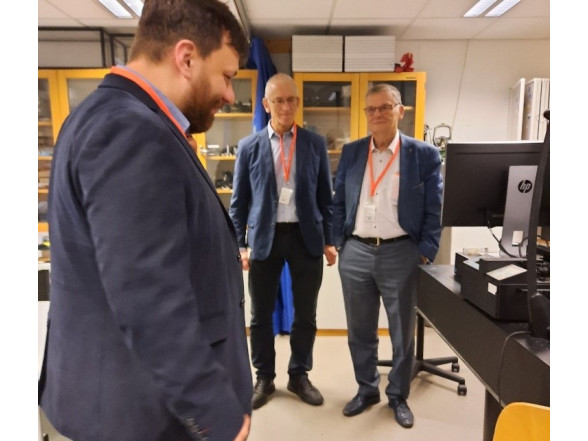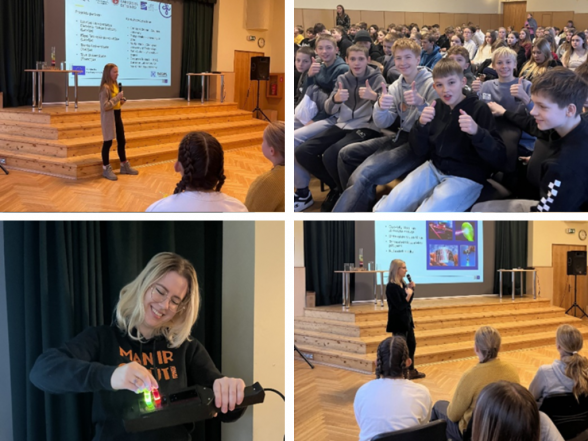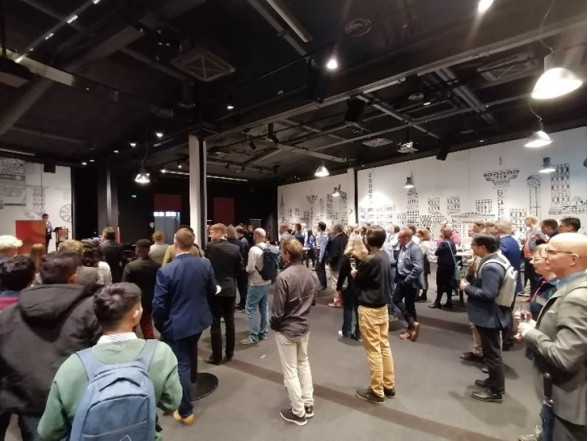A team of ISSP UL researchers and CAMART2 management visited Swedish institutions to evaluate the project’s achievements and make final discussions on project closing and future collaboration. On January 20, the CAMART2 management team from ISSP UL had several meetings with KTH’s financial representatives to finalize project matters. The day concluded with a joint review meeting with all partners, summarizing the key takeaways and action items.
The ISSP UL’s researchers’ visit to KTH and RISE, as well as Uppsala University and the Ångström Laboratory on January 19-21, further solidified their partnerships and paved the way for continued collaboration following the conclusion of the CAMART2 project.
The trip was filled with insightful discussions, knowledge-sharing, and planning for future projects. ISSP UL’s Deputy Director for Science, Andris Šternbergs, a leading researcher from the ISSP UL’s Laboratory of Visual Perception, Varis Karitāns, and leading researcher from the ISSP UL’s Laboratory of Spectroscopy Anatolijs Šarakovskis were delighted to meet with Swedish colleagues, including Mattias Hammar and Axel Strömberg, to discuss the progress of the demonstrator project, "Nanostructured microlenses for phase from far-field coded diffraction patterns." This project, which follows the conclusion of CAMART2, aims to push the boundaries of innovation in the field.
During the visit, the ISSP UL researchers also had the opportunity to explore the optical fiber laboratory led by Timothy Gibbon. They were impressed by the versatility of the optical fiber configurations and identified potential applications for one of the types of optical fiber in ISSP UL’s SERS effect demonstrator project.
In addition, Andris Šternbergs, with colleagues from ISSP UL’s Laboratory of Organic Materials, Kaspars Pudžs, and Bejan Hamawandi, engaged in productive conversations with KTH’s materials chemistry Professor Muhammet S. Toprak about the development of a thermoelectric generator (TEG) prototype. This collaboration between ISSP UL and KTH has the potential to yield groundbreaking results.
ISSP UL’s deputy director for science and leading researcher from ISSP UL’s Laboratory of Optical Materials, Linards Skuja, with the Swedish colleagues, examined the results of ISSP UL’s carbon implantation in SiO2 glass samples and planned a further work program. Moreover, researchers had a detailed conversation with RISE Senior Project Manager Michael Salter, exploring scientifically innovative topics that could lead to future joint projects with RISE and KTH in European Commission project calls.
The trip was not without its social highlights, as the Latvian team enjoyed a dinner invitation from KTH colleagues, where they reflected on the achievements of CAMART2 and the establishment of cooperative relations between the ISSP UL and the Swedish institutions.
The visit to Uppsala University was equally enriching as ISSP UL’s researchers discussed the further development of carbon ion implantation in SiO2 with Professor Anders Hallén and had the chance to visit the Ångström laboratory and meet with Professor Wei Xi, whose laboratory is at the forefront of developing glass ceramics, including bactericidal ceramics.
This trip strengthened our collaboration with CAMART2 partners and forged new connections, setting the stage for groundbreaking research and deeper institutional ties.



